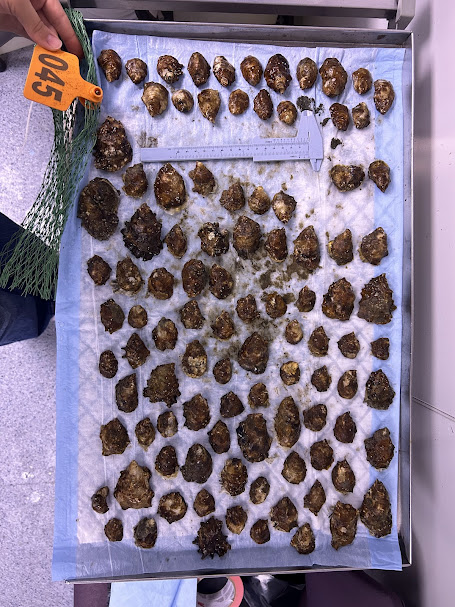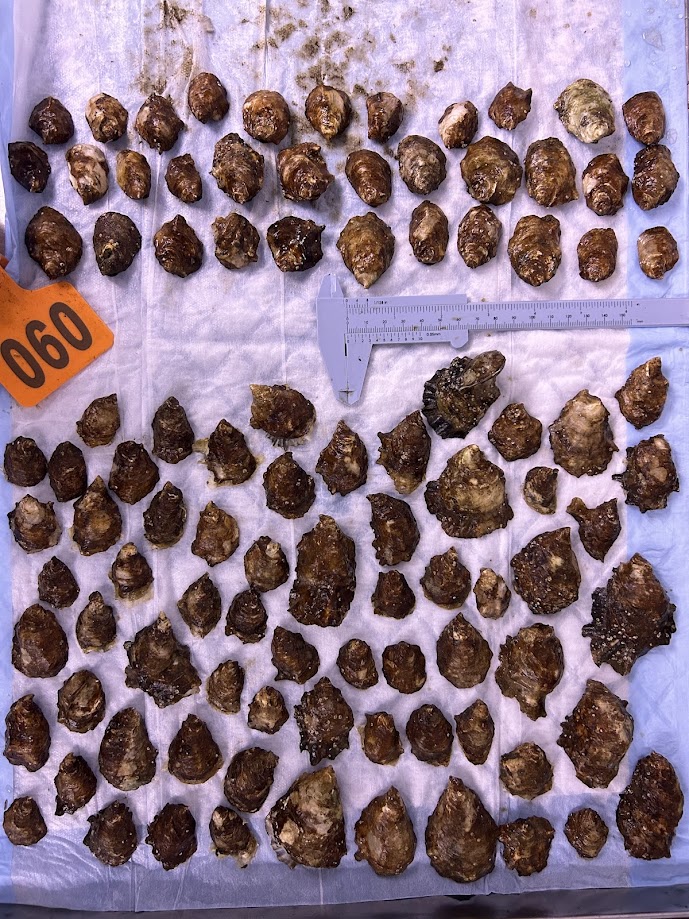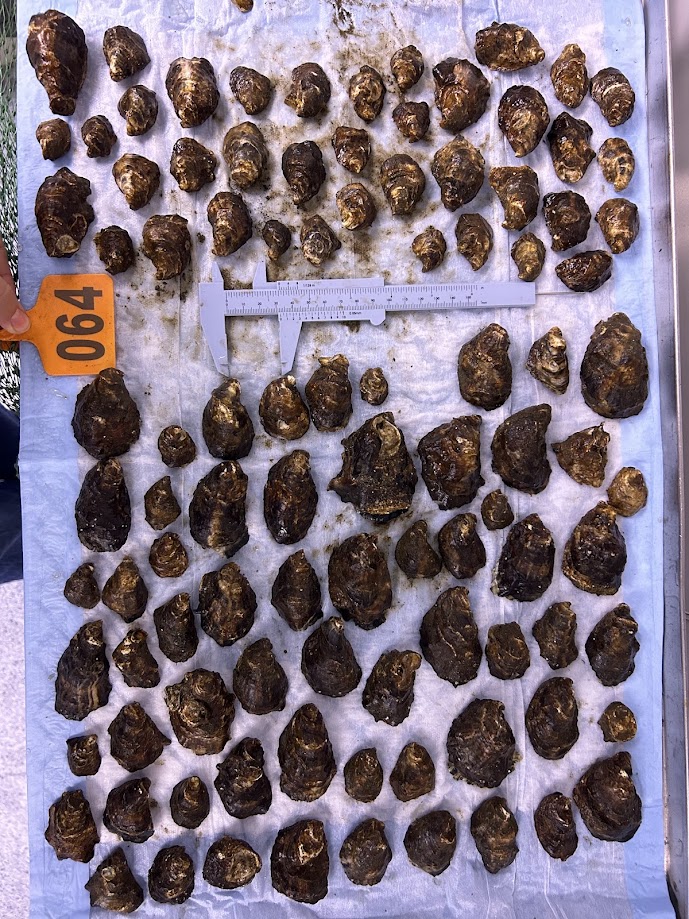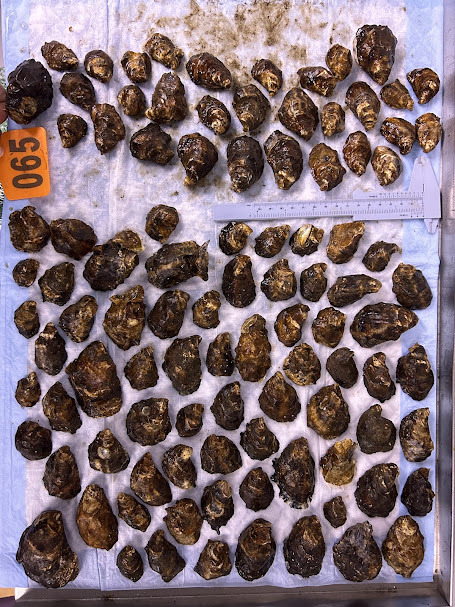Checking mortalities
I transferred the hardened diploid and triploid oysters from Point Whitney to an FTR 208 seawater tank held at 20C on July 23 (see post). They’ve now had a few days to acclimate to the tank, so I checked post-hardening mortality, making note of size as well.
To check a bag I emptied it onto a counter and sorted by live/dead. Evaluated whether alive or dead by squeezing lightly on hinge and, for any oysters that gaped, prodding lightly with metal tool. Lack of response indicated death. I took a picture of all oysters, separated by live or dead, with a ruler, then measured the length of each manually with a caliper. Removed and discarded dead oysters/shells.
Pictures below – oysters lying above the caliper are dead, below are live




During sampling I want to sample a roughly even size distribution from each group. To standardize, I set four size classes based on the average lower quartile, median, and upper quartiles of surviving oysters in each group.
| Bag 045 | Bag 060 | Bag 064 | Bag 065 | Average | |
|---|---|---|---|---|---|
| lower quartile (mm) | 32 | 31 | 38 | 39.75 | 35.2 |
| median (mm) | 39 | 36 | 45 | 47 | 41.8 |
| upper quartile (mm) | 45 | 44 | 56 | 51.25 | 49.1 |
Size classes:
Round to nearest mm
| Size class | length range |
|---|---|
| 1 | 0mm - 35mm |
| 2 | 36mm - 42mm |
| 3 | 43mm - 49mm |
| 4 | 50mm - |